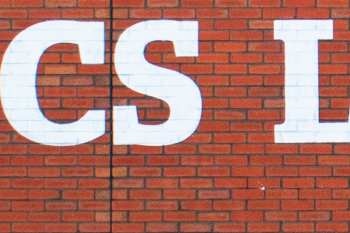What Order Should You Read The Narnia Books?
C.S. Lewis’s The Chronicles of Narnia series is beloved by children and adults alike. There are seven books in the series, and the question most people new to it have is, “What order should I read the books in?” Let’s find out.
You can read the Narnia books in either publication order or chronological order. Most people recommend publication order, which is:
- The Lion, the Witch and the Wardrobe (1950)
- Prince Caspian: The Return to Narnia (1951)
- The Voyage of the Dawn Treader (1952)
- The Silver Chair (1953)
- The Horse and His Boy (1954)
- The Magician’s Nephew (1955)
- The Last Battle (1956)
This article will outline why most people, including myself, recommend reading The Chronicles of Narnia books in publication order. It will also give you the chronological order of the books in case you’d rather read them that way. Keep reading to learn more.

1. The Lion, the Witch and the Wardrobe (1950)
The Lion, the Witch and the Wardrobe was the first book Lewis published in his Chronicles of Narnia series. Most critics agree that it’s also the most engaging. That’s why I agree that it should be the first book you give to anyone interested in reading The Chronicles of Narnia books.
The fascinating storyline and the beautiful imagery and descriptions of Narnia instantly grab the reader’s attention. It pulls them in and makes them want to read more.
After all, this was the book that inspired thousands of children to hide inside wardrobes, hoping to find magical worlds of their own. Chronologically, it may be the second book in the series, but it’s the only way to start this magical series in my heart and mind.
It also sets up the world-building for Narnia and introduces readers to the Pevensie children.
2. Prince Caspian: The Return to Narnia (1951)
Although Prince Caspian takes a leap forward in time, it’s still the next logical book in the series because it continues the story of the Pevensie children’s adventures in Narnia.
They return to Narnia to help Prince Caspian defend his throne in this book. It’s another fantastical, action-packed tale that grabs the reader’s attention on page one and holds it firmly until the last word.
3. The Voyage of the Dawn Treader (1952)
The two youngest Pevensies return to Narnia again in the third book in the series, The Voyage of the Dawn Treader. This time, they bring along their cousin, as well. They enter a Narnian sea through a painting of a ship at sea and run into King (formerly Prince) Caspian, who is on a mission, which the three children decide they’ll help accomplish.
4. The Silver Chair (1953)
The Silver Chair is the first Narnia book that doesn’t feature any of the Pevensie children as main characters. However, their cousin, Eustace, returns to Narnia with a schoolmate, and together, they agree to help King Caspian, now an elderly man, find his missing son and heir.
5. The Horse and His Boy (1954)
The Horse and His Boy is an odd book in the series. It takes place at a strange time chronologically and doesn’t focus on any of the Pevensie children – or the cousin – as main characters. In fact, it doesn’t really fit the narrative of the other books at all.
It takes place during the period when the four Pevensie children are ruling Narnia, but they play a minimal role in the story. Instead, the book focuses on children from Narnia, not children who come to Narnia from “the real” world.
6. The Magician’s Nephew (1955)
Though it was the sixth published book in the series, The Magician’s Nephew is the first book in terms of chronological time. It’s a prequel to all the others and takes place approximately 1,000 years before the events in The Lion, the Witch and the Wardrobe.
In some ways, it’s the most “adult” book of the series, as it explores themes of sin, atonement, and temptation. It contains quite a bit of autobiographical content, as well.
7. The Last Battle (1956)
Whether you read the books in order of their publication or chronological order, The Last Battle will finish out the series. It’s set about 200 years after The Silver Chair and more than 2,000 years after The Magician’s Nephew.
Without providing any potential spoilers, I’ll simply say that it ends the Narnia series in a definitive way that doesn’t leave room for sequels.
Reading the Books in Chronological Order
If you’d prefer to read the books in chronological order, you’ll want to take a different approach. In that case, you’ll want to start with The Magician’s Nephew, which was actually published sixth in the series.
Many of the other books swap places in the order, as well. Here’s how you should read the books in chronological order:
- The Magician’s Nephew
- The Lion, the Witch and the Wardrobe
- The Horse and His Boy
- Prince Caspian: The Return to Narnia
- The Voyage of the Dawn Treader
- The Silver Chair
- The Last Battle
Most boxed sets of this series published after 1994 number the books in chronological order. The publisher did this because they say it’s how Lewis wanted the books read after he’d finished them all and had time to reconsider their order.
Can You Read the Narnia Books as Stand-Alone Novels?
You can read the Narnia books as stand-alone novels; however, some things may not make as much sense if you haven’t read the other books in the series. In most cases, you can piece things together using context clues. However, it’s best to read them in order if you can.
Final Thoughts
Personally, I tend to agree with most avid lovers of the series. There’s nothing wrong with reading the books in chronological order as long as you’ve already read them in order of their publication. However, if this is your first time entering the world of Narnia, you should start with the publication order instead. The books just flow better that way.






